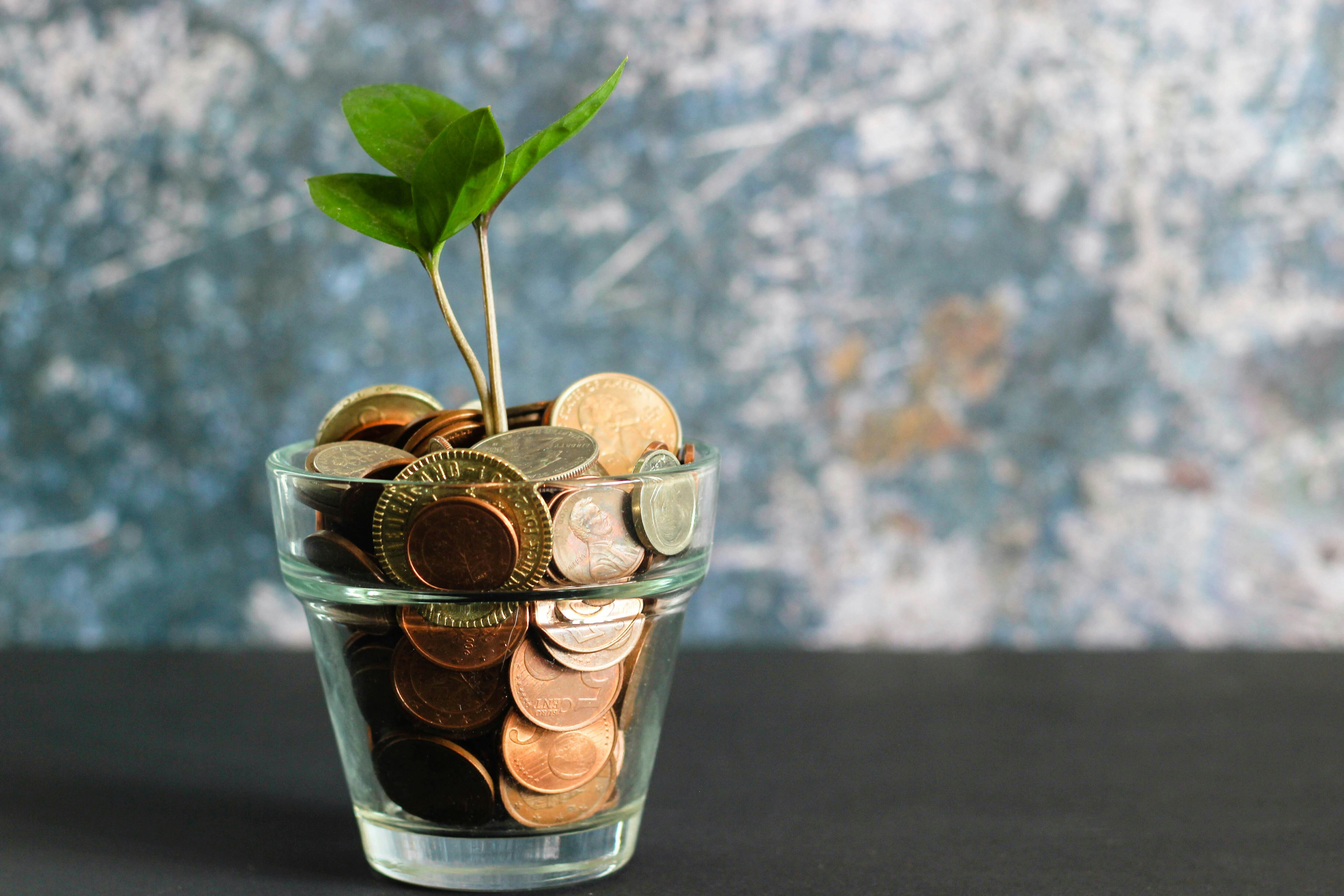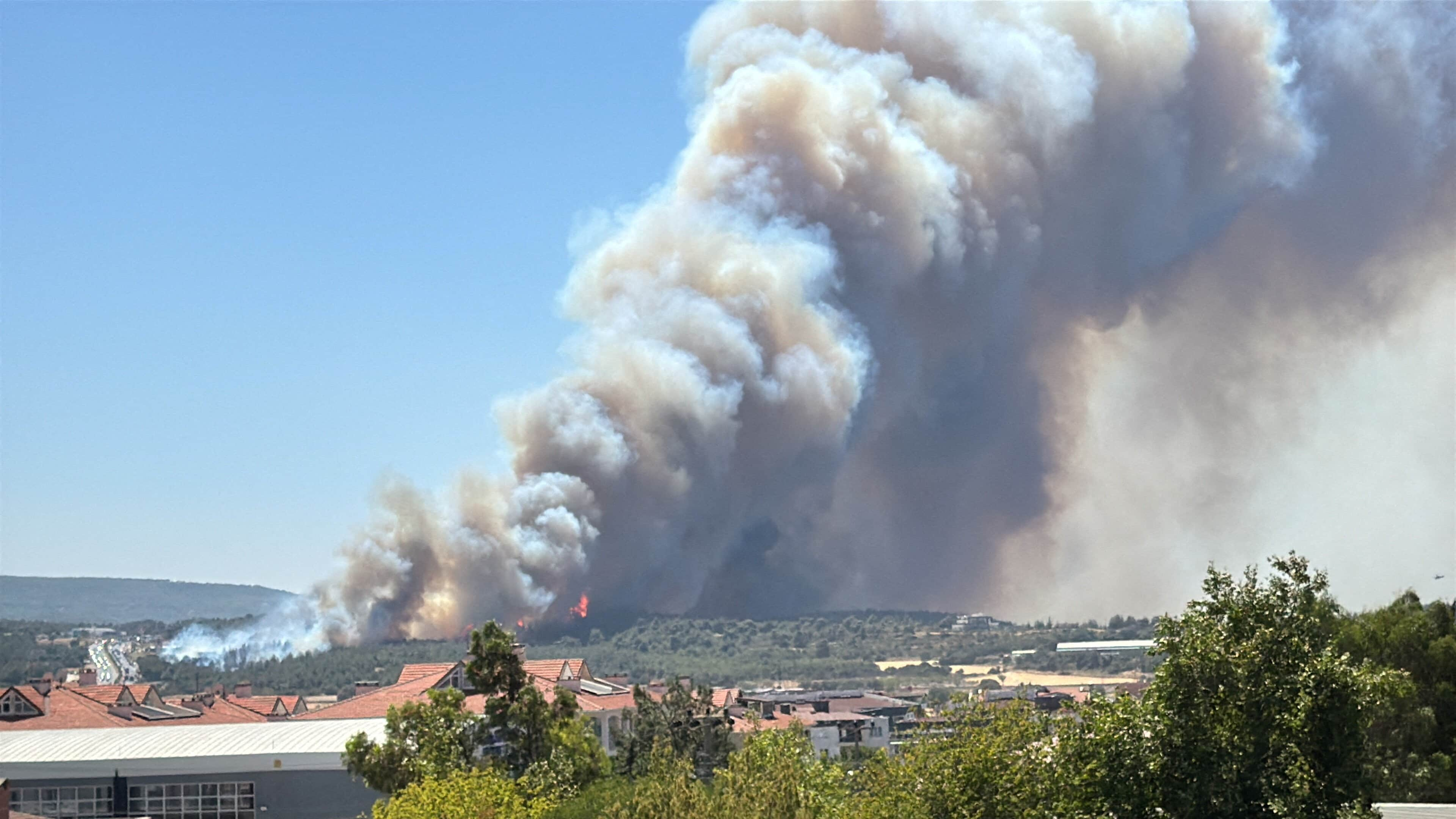This is what a Green New Deal for Europe could look like

The deal could breathe fresh life into the European economy and tackle the climate crisis. Image: REUTERS/Jonathan Ernst
Overhearing teenagers passionately discuss the climate crisis, while working for the British government, was a game-changer for one of the key architects of the Green New Deal for Europe.
Pawel Wargan quit his job as a senior advisor to the British Treasury earlier this year, inspired by growing calls outside the halls of power to more urgently address global warming.
With the European elections taking place this week, Wargan is now spearheading a campaign to build a sustainable, green economy and create jobs in Europe.
“I would sometimes come out of the office and pass the school strikes for climate protests and there were 14-year-olds discussing the policies of the Green New Deal, while my colleagues were talking about keeping the banks in London after Brexit," he says.
“The difference between this flourishing of ideas on the streets and the staleness of the programme inside the buildings of government pushed me out of the door fairly quickly."

In the last few months, the UK has been through something of a 'climate spring', with the Extinction Rebellion protests and school strikes resulting in the government being the first to declare a climate emergency.
But Wargan believes there's much more that needs to be done - across the whole of Europe.
On the other side of the Atlantic, momentum has been building around the US Green New Deal, proposed in February in a resolution by Sen. Ed Markey (D-MA) and Rep. Alexandria Ocasio-Cortez (D-NY).
It proposes to reach net-zero emissions over the next decade, upgrade to green infrastructure and create millions of jobs through a combination of taxation and deficit spending.
As the 2020 presidential election looms, it will be a key campaign message for many Democratic candidates.
Wargan is pushing for a European version of a Green New Deal, along with former Greek finance minister, economist and academic Yanis Varoufakis, the founder of Democracy in Europe Movement 2025 (DiEM25), and David Adler, DiEM25’s policy coordinator.
Wargan and Adler’s vision is for a Green New Deal that would revive the European economy, address inequalities and tackle the climate emergency. Here’s how it would look.
What is the Green New Deal for Europe and why now?
The idea of a Green New Deal for Europe is not new, but it's come to the fore again now because the campaigners are hoping enough European parliamentary candidates will back it to place it high on the legislative agenda for the incoming European Commission.
In 2014, Varoufakis was working on a similar, massive investment programme to get the European economy back on its feet after the 2008-2009 global financial crisis and subsequent European sovereign debt crisis.
In the weeks before this year's European parliamentary elections, DiEM25 launched a new platform to coordinate grassroots action across Europe and called on prospective MEPs to pledge their support for a Green New Deal.
Adler says a combination of factors was behind the renewed efforts to promote it, including the school-strike movement Fridays For Future, and that many Europeans “are more willing to accept an idea because their American counterparts are embracing it”.
Essentially, it marries two solutions in one plan – ending austerity with a firm commitment to breathing fresh life into the European economy on the one hand, and tackling the climate crisis on the other.
“We see these as being deeply intertwined,” he adds. “You’re unable to do one without the other.”
So, is the European approach the same as the US one?
No. But Adler, Wargan and their allies have been in discussions with the Sunrise Movement in the US, which held a sit-in last November with Ocasio-Cortez to demand a congressional committee be established to draft a Green New Deal.
The original New Deal of the 1930s, enacted by President Franklin D. Roosevelt, was a series of programs to aid America's recovery after the Great Depression, based on the '3Rs': relief for the poor; recovery of the economy; and reform of the financial system to prevent another crisis.
“Whereas the Americans are building on a century-old tradition of the original New Deal,” says Adler, “we’re trying to marry that language with existing programs to kick-start the economy and address the climate emergency.”
In fact, the Green New Deal for Europe is what Adler calls “both the inheritor of and a radical improvement on” the Juncker Plan of 2015, formally known as the European Fund for Strategic Investments (EFSI).
“The European institutions already recognise the issue of chronic underinvestment and the challenge of investing in green technologies and infrastructure. We’re trying to take that proposal, which we consider to be substandard, radically expand it and make it equivalent to the challenge at hand.”
Wargan says the ultimate aim would be to broaden the coalition across the globe, beyond a “US/EU/global North-centric proposal”. Movements in South America, South East Asia and Africa are already bubbling up.
How would it work?
Specifically, the program rests on investing at least 5% of Europe’s GDP in emissions-free transportation infrastructure, renewable energies and innovative technologies, while creating jobs and transitioning Europe to zero-emissions - all without raising taxes.
Since 2015, the EFSI has helped almost a million small and medium-sized companies, while creating more than 750,000 jobs, mobilising investments worth almost $440 billion.
But besides increasing the size of investment up to at least 5% of GDP each year, there are two key ways the Green New Deal builds on the Juncker Plan:
Green investment bonds: The Juncker Plan relies on a public-private partnership model of finance, whereas Adler explains the Green New Deal would enable the European Investment Bank to issue green investment bonds. Their value, in turn, would be backed by the European Central Bank and secondary markets.

Public works agency: Rather than a central authority that decides where the money goes, the Green New Deal envisions a public works agency with a democratic mandate that would involve citizen assemblies in municipalities and regions across Europe, which would then determine where the investments were most needed.
Wargan says: “There’s a lot of evidence that developing an economy based on local needs will actually go a very long way towards solving some of the issues we’re talking about.”
Would Brexit derail a Green New Deal for Europe?
Not necessarily. The Green New Deal is “EU-membership agnostic”, like DiEM25, which already works with countries outside the EU, including Serbia.
“The whole notion is this transformative project has to happen inside and outside the EU because we believe in a more continental vision of Europe, indeed a global Europe,” says Adler.
“Let’s say Brexit does happen. There’s no reason why the European Investment Bank wouldn’t coordinate with a British public investment bank to coordinate these investments, ensure that supply chains are fitting together neatly and that R&D is being coordinated across all of Europe.”
In fact, because the ongoing Brexit discussions mean there are “so many eyeballs on Britain”, Adler says Britain is uniquely placed to influence others on climate issues.
“Britain is the first country to declare a climate emergency in the world, so the European elections could be a unique opportunity to compel European neighbours to do the same.”
How does the plan ensure no one is left behind?
The pledge that the Green New Deal for Europe campaign is asking MEP candidates to sign includes a promise to ensure the ecological transition is “ethical and inclusive, uniting migrants, newcomers, and residents and entrenching equality for all races, genders, ages, sexualities and abilities”.
To make the climate transition a viable prospect in a socioeconomically divided Europe, where some countries still rely heavily on coal mining, Adler says the Green New Deal will make sure jobs heavily polluting industries are replaced by green ones.
“There are great sacrifices that need to be made in terms of our consumption patterns and the way we understand economic growth, but it doesn’t have to be about eliminating employment for great swathes of Europe in the service of the climate agenda. That’s a false trade-off and we can actually bring everyone on board.”
By addressing economic inequality as well as climate change, the Green New Deal is also seeking to “take some of the wind out of the sails” of the far right, adds Wargan.
“A decade of austerity in Europe has produced a huge amount of economic anxiety, people don’t really know where to direct their anger and the far right has filled the vacuum left open by the absence of a strong progressive movement.
“The Green New Deal offers that in a very powerful way. We hope that by bringing this idea to the table, we can stem the rise of the far right and make a more global project viable."
He adds: "Europe as an internationalist project can be a very interesting test case for a broader global internationalism.”
Don't miss any update on this topic
Create a free account and access your personalized content collection with our latest publications and analyses.
License and Republishing
World Economic Forum articles may be republished in accordance with the Creative Commons Attribution-NonCommercial-NoDerivatives 4.0 International Public License, and in accordance with our Terms of Use.
The views expressed in this article are those of the author alone and not the World Economic Forum.
Stay up to date:
Sustainability Reporting
Forum Stories newsletter
Bringing you weekly curated insights and analysis on the global issues that matter.
More on Stakeholder CapitalismSee all
Pedro Leitao
November 5, 2025






